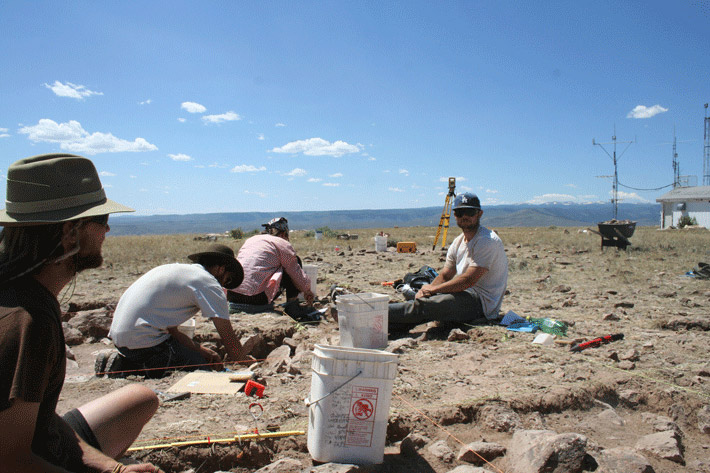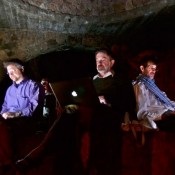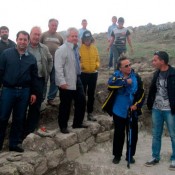Gunnison’s Tenderfoot Mountain holds an archeological site representing one of the oldest structures ever recorded in North America, and now a Cultural Resource Management Plan will help ensure its protection.
Just beneath the surface of Tenderfoot Mountain’s summit, archeologists, led by Western State Colorado University professor Dr. Mark Stiger, have uncovered the remains of eight structures. The property, owned by the state of Colorado, managed by Western State Colorado University and closed to the general public, comprises a cultural resource that archeologists refer to as the “Mountaineer Site.” Researchers from Western and elsewhere continue to uncover information and artifacts related to life during the Folsom period at the site.
“The significance here is that the site represents one of the oldest structures ever recorded in North America,” Thomas Carr, staff archeologist in the Office of Archeology and Historic Preservation with History Colorado, said. “Sites like this need to be protected, and they’re not always well understood,” Carr said. Many of the uncovered artifacts were located just centimeters beneath the surface, meaning they are vulnerable to being disturbed or broken. “There’s so much more to learn; only a fraction of it is excavated,” he continued.
During the summer, representatives from Western, telecommunications firms, radio stations and the state archeologist met to create a Cultural Resource Management Plan to protect the Mountaineer Site. The plan will restrict access by telecommunications firms to designated roads and parking areas.
Along with Federal Communications Commission and other regulatory agencies, the plan sets guidelines for how to gate roads to the property, how to approve tower construction and maintenance and how the university should lease property for telecommunications and radio towers. The state approved the plan last week.
“This type of cooperation is commendable and will ensure that Tenderfoot Mountain will continue to be a place of archeological discovery for years to come,” Brad Baba, Western State Colorado University interim president, said. “The Cultural Resource Management Plan is a great example of best practices for maintaining sites of historic cultural importance,” Carr said.




